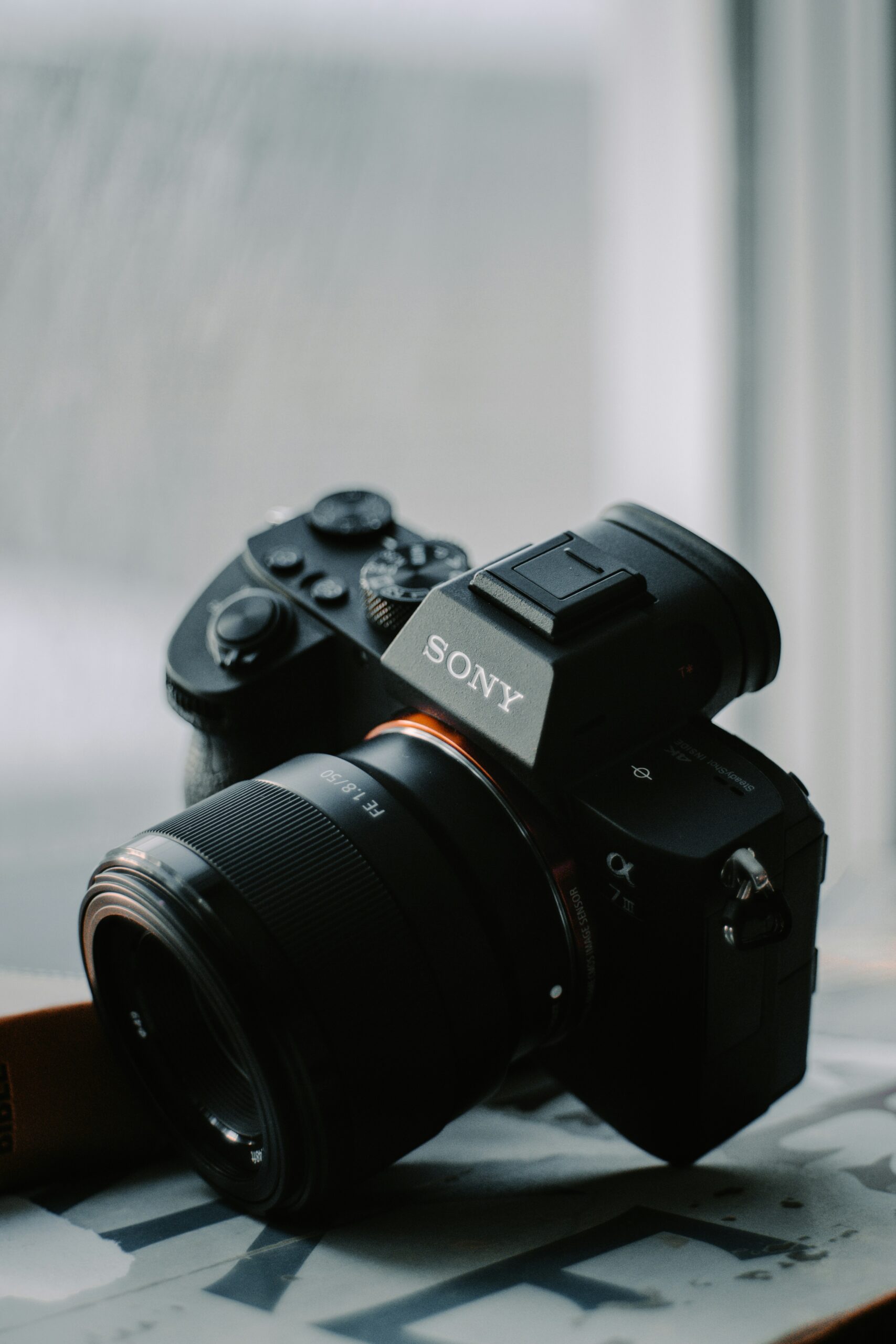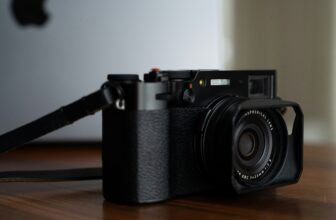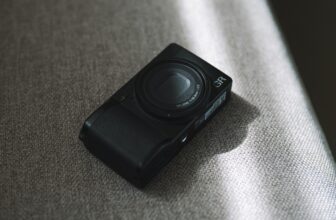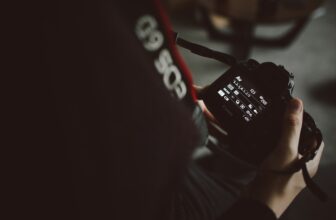Sony A7 III vs A7 IV: Which Camera is Right for You?

This post contains affiliate links which means I may receive a commission from purchases made through links. I will only recommend products I know personally used, and can attest to their high quality. Learn more on my private policy page
If you’re in the market for a new camera and looking to upgrade your Sony gear, you’re likely considering the Sony A7 III and A7 IV. These two models have created a stir in the photography community, both offering excellent features and capabilities. However, choosing the right camera for your needs can be challenging.
In this comprehensive guide, we will compare the Sony A7 III vs A7 IV to help you make an informed decision. We’ll take a close look at their specifications and features, determine the key differences, and provide insights into how each camera performs. By the end of this guide, you will have a clear understanding of which camera is the right choice for you.
Sony A7 III Features
If you’re a professional photographer or simply a camera enthusiast, you must have heard of the Sony A7 III. This camera is one of the highly acclaimed models under the Sony A7 series. Its advanced features make it a popular choice among both professionals and hobbyists alike.
One of the most notable features of the Sony A7 III is its 24.2-megapixel full-frame sensor. This technology enables the camera to capture stunning images with exceptional clarity and detail. The sensor also allows for perfect low-light performance, delivering accurate and vivid colors even in dimly lit environments.
The Sony A7 III also boasts an impressive autofocus system with 693 phase-detection points, allowing it to achieve accurate focus in even the most challenging situations. This feature makes it an excellent option for photographers who need to capture moving subjects or those who require precise focus on a particular part of the frame.
Aside from its excellent sensor and autofocus system, the Sony A7 III also features a 5-axis image stabilization system. This technology minimizes camera shake and enables photographers to take sharp and crisp images even when shooting handheld or in low-light conditions.
Other notable functionalities of the Sony A7 III include its high-speed continuous shooting of up to 10fps, dual SD card slots for extended storage, and its advanced video capability that allows it to capture 4K footage. All of these features make the Sony A7 III a versatile and powerful tool for photographers of any level.
In the next section, we will discuss the rumors and speculations surrounding the upcoming Sony A7 IV. Stay tuned!
Sony A7 IV Rumors
If you’re a fan of the Sony A7 series, you’re probably eagerly anticipating the release of the A7 IV – and you’re not alone. Rumors and speculations are swirling about what this next-generation mirrorless camera will entail.
One of the most talked-about rumors is that the A7 IV will come equipped with a new 30-32 megapixel sensor and improved autofocus capabilities. This would be a significant upgrade from the 24.2-megapixel sensor on the A7 III and would give photographers even more detail and clarity in their photos.
Another potential upgrade for the A7 IV is an improved electronic viewfinder (EVF) with a higher resolution and refresh rate. This would provide a more accurate and detailed preview of your shots, making it easier to compose and capture your perfect shot.
There has also been speculation that the A7 IV will have improved video capabilities, potentially offering 4K/60 frames per second (fps) recording. This would make it an even more versatile camera for videographers and filmmakers.
Of course, these are just rumors at this point, and nothing has been confirmed yet. It’s also worth noting that Sony tends to keep their cards close to their chest when it comes to new product releases, so it may be a while before we get any official information on the A7 IV.
Regardless, the buzz around the A7 IV is only getting stronger, and it’s clear that Sony fans have high expectations for this camera. Keep an eye out for any updates on the A7 IV in the coming months.
Sony A7 IV Release Date
If you’re eagerly anticipating the release of the Sony A7 IV, you’re not alone. While Sony hasn’t released any official information about the camera’s release date, industry experts predict that it will hit the market in late 2021 or early 2022.
Based on Sony’s previous product release patterns, the A7 IV is likely to debut at a major photography trade show or exhibition. Some of the suspected contenders include the PPE 2021 (PhotoPlus Expo), CP+ 2022 (Camera & Photo Imaging Show), and Photokina 2022.
As with all highly anticipated product releases, rumors have been circulating about the Sony A7 IV’s features and specifications. While some of this information should be taken with a grain of salt, it’s worth noting that leaked details suggest the new camera will have a higher resolution sensor, improved autofocus capabilities, and a higher burst rate compared to the A7 III.
Speculated Sony A7 IV Features
| Features | Details |
|---|---|
| Sensor | Higher resolution (around 36-41 megapixels) |
| Autofocus | Real-time AF tracking and advanced eye autofocus |
| Burst Rate | 10 fps or higher (compared to the A7 III’s 10 fps) |
| Image Stabilization | In-body stabilization with 5-axis compensation |
| Video Recording | 4K/60p video capabilities |
| Connectivity | Built-in Wi-Fi and Bluetooth |
While we cannot confirm any of these rumored features, they do provide some insight into the kinds of upgrades we might expect from the A7 IV. We recommend that you keep an eye out for further official announcements or leaks in the lead up to the camera’s release date.
Fuji XT5 Overview
If you’re in the market for a new camera, the Fuji XT5 is definitely worth considering. This mirrorless camera boasts impressive features and specs that make it a popular choice among photographers. Let’s take a closer look at what the Fuji XT5 has to offer.
Fuji XT5 Specifications
The Fuji XT5 features a 26.1-megapixel APS-C X-Trans CMOS 4 sensor, which delivers stunning image quality with vivid colors and sharp details. The camera also has an impressive ISO sensitivity range of 160-12800 (expandable up to 51200), making it suitable for shooting in different lighting conditions. The camera has a maximum shutter speed of 1/8000 sec and can shoot up to 30fps in electronic shutter mode, ensuring you never miss a moment.
Fuji XT5 Features
The Fuji XT5 has a range of features that make it a great option for photographers. It has a hybrid AF system with 425 autofocus points, which enables it to focus quickly and accurately, even in low light conditions. The camera also has a 3-inch tilting LCD touchscreen, which makes it easy to navigate the menu and frame your shots from different angles.
Another standout feature of the Fuji XT5 is its film simulation modes. The camera allows you to simulate the look of popular Fuji film stocks, such as Provia, Velvia, and Acros, giving your photos a unique and nostalgic feel. The camera also has a built-in Wi-Fi and Bluetooth connectivity, making sharing your photos and videos with your friends and family a breeze.
Fuji XT5 Review
Overall, the Fuji XT5 is a fantastic camera that offers exceptional performance and image quality. It’s compact and lightweight, making it easy to carry around, while still packing a punch in terms of features and specs. It’s a great choice for enthusiasts and professionals alike, who are looking for a mirrorless camera that is capable of producing stunning photos and videos.
Fuji XT5 Price
The Fuji XT5 is competitively priced at $$1,399, making it an affordable option for photographers who don’t want to break the bank. When compared to other mirrorless cameras in its class, the Fuji XT5 offers tremendous value for its price.
Best Lenses for Fuji XT5
If you’re looking for the best lenses to pair with your Fuji XT5 camera, there are plenty of options to choose from. When selecting lenses, it’s important to consider factors such as focal length, aperture, and image quality to ensure that you get the most out of your camera. Here are some of the best lenses for the Fuji XT5:
Fujifilm Fujinon XF16-55mm F2.8 R LM WR
The Fujifilm Fujinon XF16-55mm F2.8 R LM WR lens is a versatile, high-quality lens that is perfect for a wide range of photography styles. With a constant maximum aperture of F2.8 throughout its zoom range, this lens provides sharp images with beautiful bokeh. Ideal for landscape, portrait, and wedding photography, the XF16-55mm F2.8 lens is a must-have in any photographer’s kit.
Fujifilm Fujinon XF55-200mm F3.5-4.8 R LM OIS
The Fujifilm Fujinon XF55-200mm F3.5-4.8 R LM OIS lens is a versatile telephoto zoom lens that delivers exceptional image quality. With a focal length range of 55-200mm and a maximum aperture of F3.5-4.8, this lens is perfect for sports, wildlife, and concert photography. Its optical image stabilization (OIS) system ensures that your images are sharp and stable even when shooting in low-light conditions.
Fujifilm Fujinon XF50-140mm F2.8 R LM OIS WR
The Fujifilm Fujinon XF50-140mm F2.8 R LM OIS WR lens is a high-performance telephoto zoom lens that is perfect for professional photographers. With a focal length range of 50-140mm and a maximum aperture of F2.8, this lens delivers stunningly sharp images with beautiful bokeh. Its optical image stabilization (OIS) system ensures that your images are sharp and stable even when shooting at slower shutter speeds.
Ultimately, the best lenses for your Fuji XT5 camera will depend on your individual needs and shooting style. Consider what types of photography you enjoy and what kind of images you want to create, and select lenses that will help you achieve your goals.
Fuji XT5 Accessories
If you’re a Fuji XT5 owner looking to increase your camera’s capabilities, you may be interested in investing in some accessories. Here, we’ve compiled a list of recommended accessories to help you enhance your XT5 shooting experience.
Batteries
When you’re out shooting for extended periods, you don’t want to run out of battery life. We suggest investing in some extra batteries to keep on hand so that you never miss a moment. The Wasabi Power Battery (2-Pack) and Dual Charger kit is an affordable and reliable option, while the Fujifilm NP-W126S is the official battery for the XT5.
Camera Bags
Transporting your Fuji XT5 safely and comfortably is essential, and a high-quality camera bag is the perfect solution. The Think Tank Retrospective Shoulder Bag is a versatile and durable option with ample space for your camera and accessories. The Lowepro Fastpack BP 250 AW II is also a great option, featuring a unique side-entry for easy access to your camera.
Grips
If you’re looking to improve your camera’s stability, a grip is an excellent accessory to consider. The Fujifilm MHG-XT10 Aluminum Hand Grip is specifically designed for the XT5, providing a comfortable grip and additional space for your hand. The Vello BG-FXC50 Battery Grip is also a great option, with room for two batteries and compatibility with Canon LP-E8 batteries as well.
Memory Cards
When it comes to memory cards, you want speed, reliability, and plenty of storage space. The SanDisk Extreme Pro SDXC UHS-I card is a top-of-the-line option with write speeds of up to 90MB/s. The Lexar Professional 1667x UHS-II SDXC card is also a reliable choice, offering read speeds of up to 250MB/s and write speeds of up to 90MB/s.
Sony A7 IV Features
If you’re considering investing in the Sony A7 IV, it’s essential to understand the full range of features that this camera offers. The A7 IV is a significant upgrade from the A7 III, packed with advanced features and capabilities to take your photography to the next level.
One of the most significant improvements is the A7 IV’s sensor, offering an impressive 30MP resolution and enhanced ISO sensitivity. This camera also features a sophisticated autofocus system with advanced object tracking and real-time eye autofocus for both humans and animals.
But what truly sets the A7 IV apart is its exceptional image quality, delivering impressive detail, color accuracy, and dynamic range. This camera also supports 4K video recording at up to 60 frames per second, making it a top contender for videography.
| Feature | Description |
|---|---|
| 30MP Sensor | An advanced sensor with higher resolution and better ISO performance than the A7 III. |
| Real-time Eye AF | Advanced autofocus technology for tracking eyes of both humans and animals. |
| 4K Video | Supports 4K video recording at up to 60 frames per second. |
| Improved Viewfinder | A sharper and brighter viewfinder with better magnification and refresh rate. |
| Enhanced Image Stabilization | An upgraded in-body image stabilization system that offers more stability for shots and videos. |
| New Processor | The latest BIONZ XR processor offering faster processing speeds and improved performance. |
| Dual Card Slots | Two slots for SD cards, both supporting UHS-II. |
Overall, the Sony A7 IV is an exceptional camera that offers a wide range of advanced features and capabilities for both photography and videography. Its sophisticated autofocus system, high-resolution sensor, and exceptional image quality make it an excellent investment for professionals and enthusiasts alike.
A7 III vs A7 IV: Key Differences
When it comes to Sony camera comparison, the A7 series is known for its exceptional image quality, impressive autofocus system, and great build quality. The Sony A7 III and A7 IV are two of the most popular models in the series, and it can be challenging to decide which camera to choose. In this section, we will compare the key differences between the A7 III and A7 IV to help you make an informed decision.
One of the most significant differences between these two cameras is the sensor. The A7 IV is expected to feature a higher resolution sensor and a larger pixel width than the A7 III. This means that you can expect better image quality and more detail in your shots with the A7 IV.
The autofocus system is another area where the A7 IV is expected to outperform the A7 III. The A7 IV is rumored to have a more advanced autofocus system with a higher number of focus points, making it easier to get sharp shots in challenging lighting conditions.
Additionally, the A7 IV is expected to offer better video capabilities than the A7 III. It is rumored to be capable of shooting 4K video at 60 frames per second, which is a considerable improvement over the A7 III’s 4K video at 30 frames per second.
However, one of the most significant differences between these two cameras is likely to be the price. The A7 IV is expected to be more expensive than the A7 III, which is something to keep in mind when making your decision.
A7 III vs A7 IV: Side-by-Side Comparison
| Feature | A7 III | A7 IV |
|---|---|---|
| Sensor | 24.2 megapixels | Expected to be higher resolution |
| Autofocus System | 693 Phase Detect AF points | Expected to have more advanced autofocus system with higher number of focus points |
| Video capabilities | 4K at 30 frames per second | Expected to be capable of shooting 4K at 60 frames per second |
| Price | $1,999 (body only) | Expected to be more expensive than A7 III |
Sony A7 IV: Should You Upgrade?
If you’re a Sony camera enthusiast and own a Sony A7 III, you may be wondering whether it’s worth upgrading to the Sony A7 IV. With significant improvements and new features, the A7 IV is undoubtedly an exciting option.
One major upgrade is in the camera’s sensor. The A7 IV is rumored to have an improved sensor with a higher megapixel count, which means sharper and more detailed images. Additionally, the autofocus system is expected to be more advanced, with improved accuracy and speed.
Another feature to consider is the video capabilities of the A7 IV. It is expected to have higher quality video recording and improved in-body stabilization, ideal for those who want to shoot high-quality videos with ease.
However, it’s also worth noting that the A7 IV is likely to come with a hefty price tag. It may not be the most cost-effective option for photographers who don’t require its advanced features and upgraded capabilities.
If you’re unsure whether the Sony A7 IV is the right choice for you, we recommend considering your specific needs and priorities as a photographer. If you need the added features and improved capabilities, upgrading to the A7 IV may be the right choice. However, if you don’t require these upgrades, the Sony A7 III is still an excellent camera with impressive performance.
Sony A7 III vs A7 IV Comparison
| Feature | Sony A7 III | Sony A7 IV |
|---|---|---|
| Sensor | 24.2 megapixels | Improved sensor rumored, expected to have more than 30 megapixels |
| Autofocus | 693 phase-detection points, 425 contrast-detection points | Advanced autofocus system expected, with improved accuracy and speed |
| Video capabilities | 4K video recording with full-pixel readout, S-Log3, and HLG | Improved video quality and in-body stabilization |
| Price | Starting at around $1,700 | Expected to be significantly more expensive than A7 III |
Conclusion
After carefully considering the features and capabilities of the Sony A7 III and A7 IV, we hope you feel more informed about which camera suits your needs best. If you are looking for a reliable option with a proven track record, the A7 III is a great choice with excellent autofocus and image quality. However, if you are seeking the latest advancements in mirrorless technology, the A7 IV may be worth the investment.
Ultimately, the decision to upgrade is up to you and your personal preferences. Whatever camera you choose, make sure it aligns with your photography goals and style.
We hope this guide has been helpful in your camera selection process. Happy shooting!
FAQ
What are the specifications of the Fuji XT5 camera?
The Fuji XT5 camera features a 26.1-megapixel X-Trans CMOS 4 sensor, X-Processor 4 image processing engine, 3.69-million-dot OLED viewfinder, 30 fps continuous shooting, 4K video recording, and a 3-inch tilting touchscreen display.
What is the price of the Fuji XT5?
The price of the Fuji XT5 varies depending on the retailer and included accessories, but it ranges from $1,399 to $1,699 for the body-only option.
What are the best lenses for the Fuji XT5?
Some of the best lenses for the Fuji XT5 include the Fujinon XF 35mm f/1.4 R, Fujinon XF 23mm f/2 R WR, and Fujinon XF 50-140mm f/2.8 R LM OIS WR.
When will the Fuji XT5 be released?
The Fuji XT5 has not been officially announced or released yet. Please stay tuned for updates from Fujifilm regarding the release date.
How does the Sony A7 III compare to the A7 IV?
The Sony A7 III features a 24.2-megapixel sensor, while the A7 IV is rumored to have a higher resolution sensor. The A7 IV is also expected to have improved autofocus, faster continuous shooting, and upgraded video capabilities compared to the A7 III.
What are the key features of the Sony A7 III?
The Sony A7 III boasts a 24.2-megapixel full-frame sensor, 693 phase-detection autofocus points, 5-axis in-body image stabilization, 10 fps continuous shooting, 4K video recording, and a tilting touchscreen display.
Are there any rumors about the Sony A7 IV?
Yes, there have been rumors and speculations surrounding the Sony A7 IV, including potential improvements in sensor resolution, autofocus performance, and video capabilities. However, official details have not been released yet.
When can we expect the Sony A7 IV to be released?
The release date of the Sony A7 IV has not been announced officially. We recommend keeping an eye on Sony’s official announcements or reputable sources for updates on the camera’s availability.
What are the notable features of the Sony A7 IV?
The Sony A7 IV is rumored to feature a higher resolution sensor, improved autofocus system, faster burst shooting, enhanced image and video quality, as well as potentially upgraded connectivity options.
What are the differences between the Sony A7 III and A7 IV?
The key differences between the Sony A7 III and A7 IV are expected to be in sensor resolution, autofocus performance, burst shooting speed, and video capabilities. The A7 IV is anticipated to offer significant upgrades in these areas over the A7 III.
Is it worth upgrading from the Sony A7 III to the A7 IV?
Whether it is worth upgrading from the Sony A7 III to the A7 IV depends on individual needs and priorities. If you require higher resolution, improved autofocus, faster shooting, and upgraded video capabilities, the A7 IV may be a worthwhile upgrade. However, it is essential to consider the potential cost and whether the added features align with your specific photography needs.
This post contains affiliate links which means I may receive a commission from purchases made through links. I will only recommend products I know personally used, and can attest to their high quality. Learn more on my private policy page






